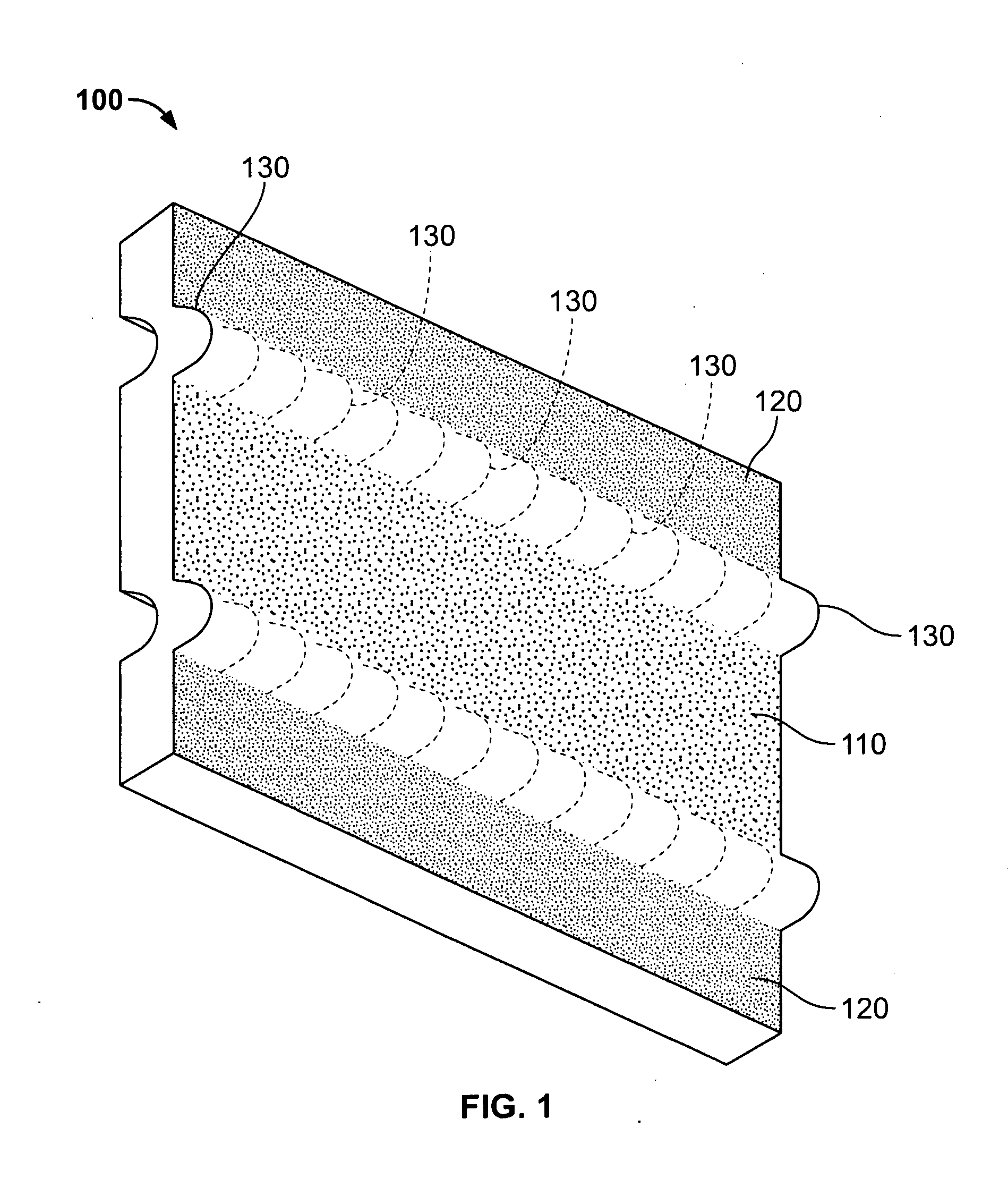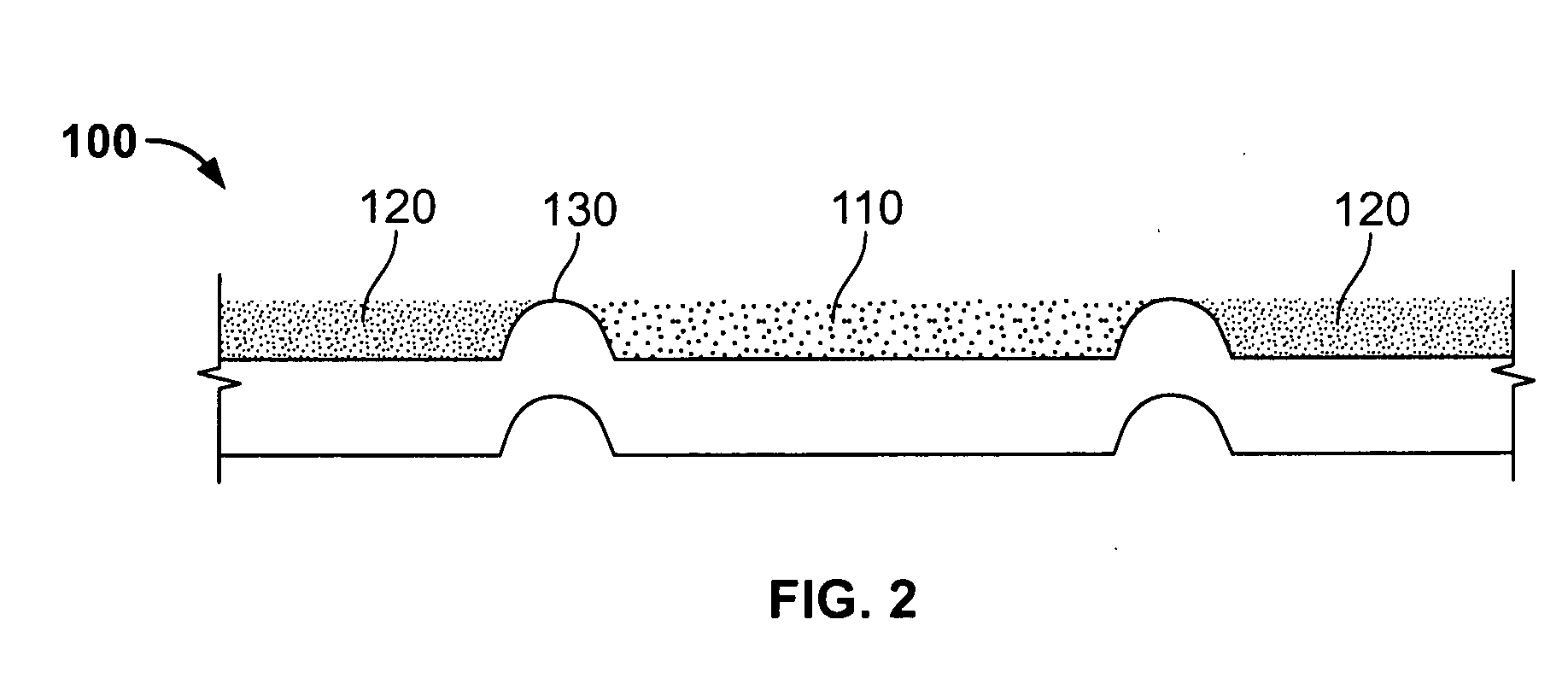Method and apparatus for applying a protective oral care composition
a technology of oral care and composition, applied in the direction of drug compositions, brackets, arch wires, etc., can solve the problems of intrinsic staining, inability to mechanical methods, and general staining of teeth, so as to prevent a reaction
- Summary
- Abstract
- Description
- Claims
- Application Information
AI Technical Summary
Benefits of technology
Problems solved by technology
Method used
Image
Examples
specific example 1
[0063]Gels were prepared as outlined in Table 1.
TABLE 1Ingredient % w / wEx 1Ex 2Ex 3Ex 4Ex 5Ex 6PLURONIC F127303030303030Water49.258.758.959.059.059.0Hydrogen peroxide (30%)101010101010Polyethylene glycol 60010—————Etidronic Acid0.20.20.20.20.20.2Sodium Lauryl sulfate0.20.20.20.20.20.2Sodium Pyrophosphate0.20.20.20.20.20.2Triethyl Citrate0.20.20.20.20.20.2Resorcinol——0.2———Sodium Fluoride———0.2——Sodium Chloride————0.2—Sodium Acetate—————0.2
[0064]The dental gels were prepared by adding etidronic acid, triethyl citrate and either resorcinol, sodium fluoride, sodium chloride or sodium fluoride to distilled water until a clear solution was obtained. Sodium lauryl sulfate was then added to the mixture and stirring continued until the surfactant dissolved. The resulting mixture was then transferred to a stainless steel premier vacuum mixer and PLURONICF127® and polyethylene glycol was added. The mixture was then mixed for 10 minutes without the vacuum, after this period the vacuum was turn...
specific example 2
[0071]As detailed in Table 3 below, compositions including CARBOPOL® were prepared to determine the clinical effect of a catalase inhibitor.
TABLE 3Ingredient % w / wEx AEx BEx CCARBOPOL 940222Water32.332.137.1Hydrogen peroxide (50%)606060Polyethylene glycol 60055—Phosphoric Acid0.20.20.2Sodium Lauryl sulfate0.20.20.2Sodium Pyrophosphate0.20.20.2Triethyl Citrate0.10.10.1Resorcinol—0.20.2
[0072]The dental gels were prepared by mixing CARBOPOL®, water and polyethylene glycol until a homogenous mixture was obtained. Then phosphoric acid, triethyl citrate and resorcinol were added to the sample and mixed. The mixture was then transferred to a double planetary mixer and hydrogen peroxide was added. The mixture was then mixed under vacuum for about 1 hour. The gel was then obtained by adding 6 g of triethanolamine and further mixing the sample under vacuum for an additional one hour. The final pH of the gel was adjusted to about pH 4 using sodium borate. Notably, the pH can also be adjusted w...
specific example 3
[0076]To further test the effects of a catalase inhibitor, a mouth rinse was prepared as shown in Table 6 below.
TABLE 6Ingredient% (w / w)Water (distilled)82.45Hydrogen Peroxide (35% Solution)9Pluronic F685Sodium Acetate (30% Solution)1.25Pluronic F1271Phosphoric acid (80%)0.5Sodium Pyrophosphate0.4Polysorbate 200.2Sodium Lauryl Sulfate0.2Triethyl Citrate0.1Saccharin0.1
[0077]The above composition was prepared by adding sodium pyrophosphate to distilled water and allowing it dissolve by mixing. This was followed by adding PLURONIC F68 to the above mixture and allowing it to dissolve by mixing. Then, PLURONIC F127® was added and dissolved by mixing. Sodium acetate was then added and dissolved. Then, Polysorbate 20 was added and dissolved by mixing. Then, 0.005% Antifoam A was added to control excessive foaming. Sodium lauryl sulfate was then added to the mixture and allowed to dissolve by mixing. Then, phosphoric acid, triethyl citrate, and sodium saccharin were added and allowed to dis...
PUM
| Property | Measurement | Unit |
|---|---|---|
| Length | aaaaa | aaaaa |
| Fraction | aaaaa | aaaaa |
| Percent by mass | aaaaa | aaaaa |
Abstract
Description
Claims
Application Information
 Login to View More
Login to View More - R&D
- Intellectual Property
- Life Sciences
- Materials
- Tech Scout
- Unparalleled Data Quality
- Higher Quality Content
- 60% Fewer Hallucinations
Browse by: Latest US Patents, China's latest patents, Technical Efficacy Thesaurus, Application Domain, Technology Topic, Popular Technical Reports.
© 2025 PatSnap. All rights reserved.Legal|Privacy policy|Modern Slavery Act Transparency Statement|Sitemap|About US| Contact US: help@patsnap.com



